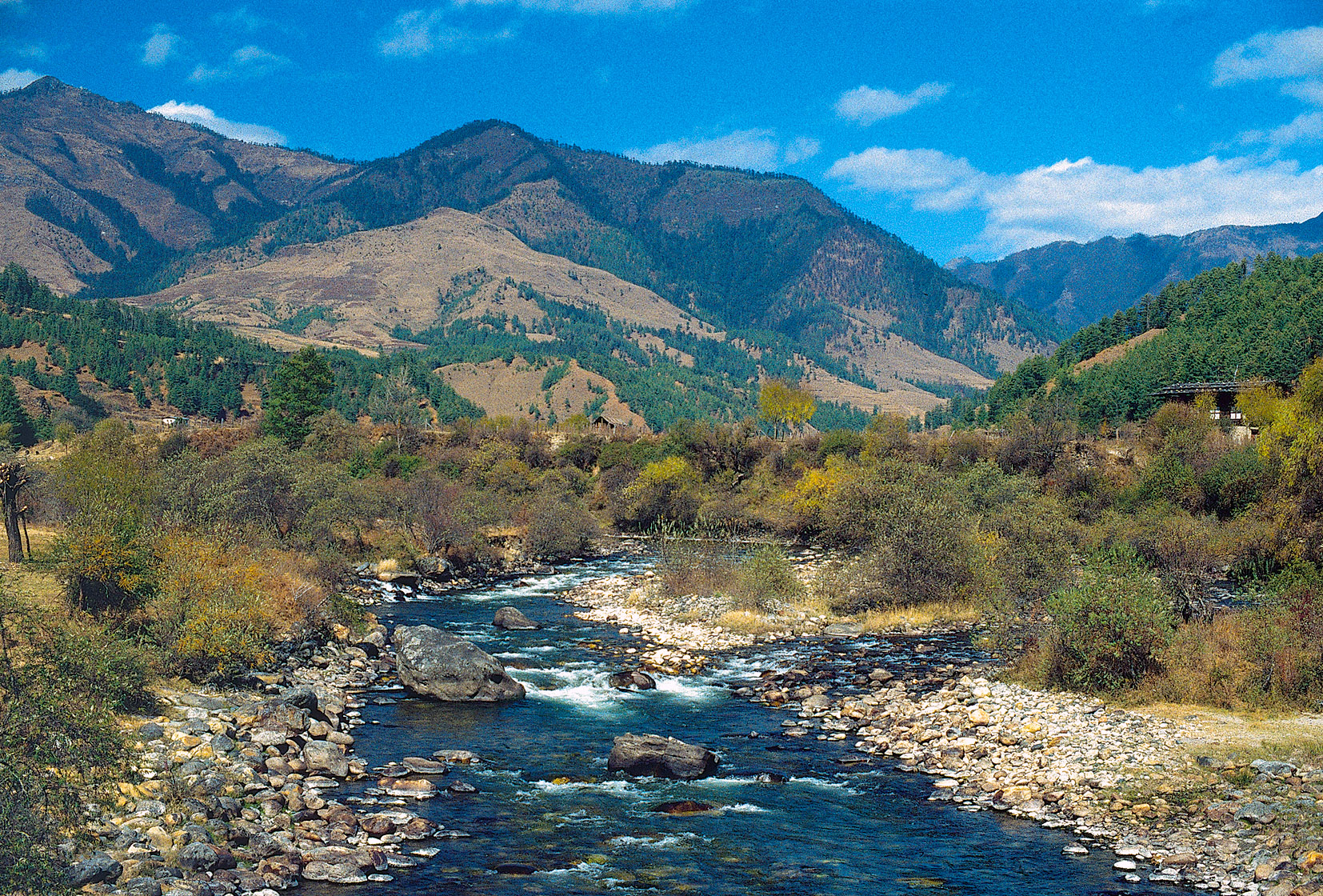GeoExperts: Bart Jordans on the Bounties of Bhutan

Bart Jordans has been guiding treks in Bhutan since 1994, and has been leading GeoEx trips there since 2000. Bart lived in Bhutan with his wife and two small children from 1999-2003, and though he now lives in Denmark, he returns to Bhutan as often as he can. GeoEx staffer Jenny Jackson interviewed Bart about the allure and the future of travel to Bhutan.
JJ: In your opinion, what are the most attractive qualities of Bhutan for travellers?
BJ: Ah, I have a long list of attractive qualities! There’s the pure and plentiful nature, the warm and friendly people, the rich culture, the beautiful and powerful dzong fortresses, the strong Buddhist belief which is practiced in a very relaxed and open way, the exquisite handicrafts, the easy-going lifestyle outside Thimphu, the incredible mountain scenery and nearly unspoiled countryside, the delicious chili dishes, the amazing archery – I could go on and on!
Why do you love leading tours in Bhutan?
To put it succinctly: I get to work with really great Bhutanese staff in a setting of spectacular, unspoiled nature.
How is Bhutan different from its Himalayan neighbours?
1) The pervading sense of vast emptiness in the mountains.
2) The enormity of pristine nature everywhere.
3) The omnipresent and very strong, unifying cultural and Buddhist traditions.
Is there one story from a GeoEx trip in Bhutan that stands out for you as an example of the experience travelers have?
Yes, I have one memory in particular from one of the more challenging Lunana-Snowman treks. As our group was crossing the first high pass – the Nyele La, leading to Lingshi – we met some groups that were returning due to there being too much fresh snow. Indeed, I have never seen the pass with so much snow! But we carried on and as a result, we had the area entirely to ourselves — in the most beautiful, pristine conditions with fresh snow on the ground and grand weather. It was magical! We even spotted snow leopard and yeti tracks!
What is the biggest challenge of your job as a guide?
On the longer trips, in addition to keeping everybody happy with the trip and with the other people in the group, I have to always be mindful of possible health and trip-logistic problems. This can be very challenging. But I love the challenge!
What is one thing that you make sure to do on every trip?
I try to keep an especially sharp eye on everybody for the first couple of days at altitude, to see how everyone is coping and to catch any potential problems before they become serious.
What has living and traveling in Bhutan taught you?
I loved living in Thimphu, which taught me that even a capital city can have a slow and healthy attitude towards life. That attitude – and the benefits that living this way bestows — was even more apparent in the countryside. It’s something I miss very much living in Copenhagen.
How has tourism evolved in Bhutan since you have been going there and where do you see that evolution going?
Tourism has grown and is growing enormously in Bhutan, which can be good and bad. The number of cultural trips is growing much more than trekking trips, which is fine with me, because this means that the mountains don’t get overcrowded. But the influx of cultural tourists puts growing pressure on hotel and travel organization staffs. One longstanding challenge that this growth in visitors has made even more challenging, is the fact that the prime visitor season is restricted to two months in spring and two months in fall (even though visiting Bhutan in other months can be very lovely and wonderfully uncrowded). Bhutan is seeking to find the best way to manage the demands – and reap the benefits — of these most popular months and balance that growth with the very reduced visitor needs of the off-season.
What seems to be the biggest surprise for travellers who visit Bhutan?
Their visit begins with a big surprise: When travellers arrive at Paro airport and walk from the plane to the airport terminal, they are immediately struck by the fresh mountain air and the beautiful Bhutanese farmhouses surrounded by forest-covered hills and mountains, and the beautiful native textiles that the local people are wearing. It’s the perfect way to start an unforgettable journey!

